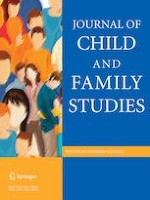06-04-2021 | Original Paper
Strengths-Based Practice in Child Welfare: A Systematic Literature Review
Gepubliceerd in: Journal of Child and Family Studies | Uitgave 6/2021
Log in om toegang te krijgenAbstract
This paper examines the academic research discourse on strengths-based practice in child welfare. A gap in the literature exists concerning systematic research studies addressing strengths-based practices with families in the child welfare system. Therefore, the aim of this paper is to examine how a strengths-based approach facilitates working relationships between child welfare services and families. A systematic review was performed following the principles of the PRISMA statement and included 11 peer-reviewed articles, published in English, in academic journals from multiple scientific databases, reporting primary research. Strengths-based skills were found to be essential to fostering a stronger rapport with families and to building relationships with them. Furthermore, strengths-based approaches facilitate personal engagement, which can increase the sense of empowerment and encourage families to find solutions and to make decisions about their own lives. One of the study’s findings suggests that in the process of empowering families, workers themselves learned to empower themselves. Workers shifting towards strengths-based thinking enhanced their sense of self-empowerment, which increased their knowledge and skills to help empower families. The findings of this review indicate that the strengths-based perspective reported from the studies facilitates positive interaction between workers and families, including collaboration and the building of relationships.
